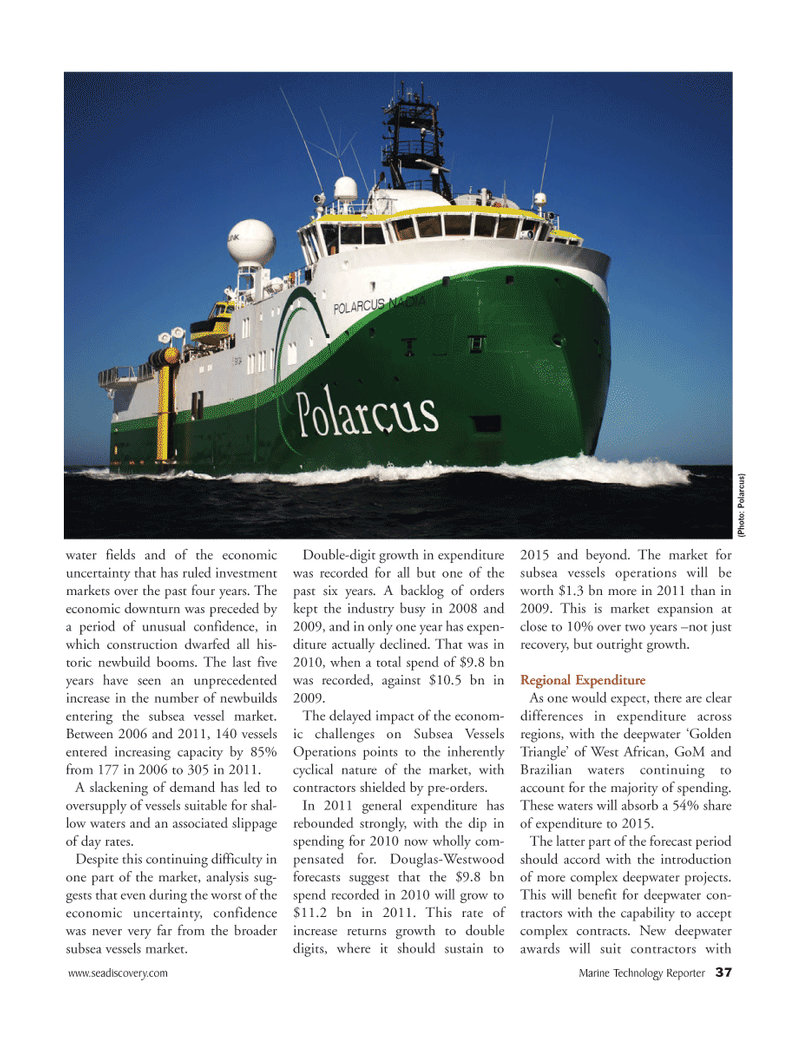
Page 37: of Marine Technology Magazine (September 2011)
Ocean Observation
Read this page in Pdf, Flash or Html5 edition of September 2011 Marine Technology Magazine
www.seadiscovery.com Marine Technology Reporter 37water fields and of the economicuncertainty that has ruled investment markets over the past four years. The economic downturn was preceded by a period of unusual confidence, inwhich construction dwarfed all his- toric newbuild booms. The last five years have seen an unprecedented increase in the number of newbuilds entering the subsea vessel market. Between 2006 and 2011, 140 vessels entered increasing capacity by 85% from 177 in 2006 to 305 in 2011. A slackening of demand has led tooversupply of vessels suitable for shal- low waters and an associated slippage of day rates. Despite this continuing difficulty in one part of the market, analysis sug- gests that even during the worst of the economic uncertainty, confidence was never very far from the broader subsea vessels market. Double-digit growth in expenditure was recorded for all but one of the past six years. A backlog of orders kept the industry busy in 2008 and 2009, and in only one year has expen- diture actually declined. That was in 2010, when a total spend of $9.8 bnwas recorded, against $10.5 bn in 2009.The delayed impact of the econom- ic challenges on Subsea Vessels Operations points to the inherently cyclical nature of the market, with contractors shielded by pre-orders. In 2011 general expenditure has rebounded strongly, with the dip in spending for 2010 now wholly com- pensated for. Douglas-Westwood forecasts suggest that the $9.8 bn spend recorded in 2010 will grow to $11.2 bn in 2011. This rate of increase returns growth to double digits, where it should sustain to 2015 and beyond. The market for subsea vessels operations will be worth $1.3 bn more in 2011 than in 2009. This is market expansion at close to 10% over two years ?not just recovery, but outright growth. Regional Expenditure As one would expect, there are clear differences in expenditure across regions, with the deepwater ?Golden Triangle? of West African, GoM and Brazilian waters continuing to account for the majority of spending.These waters will absorb a 54% share of expenditure to 2015. The latter part of the forecast period should accord with the introduction of more complex deepwater projects. This will benefit for deepwater con- tractors with the capability to acceptcomplex contracts. New deepwater awards will suit contractors with (Photo: Polarcus) MTR#7 (34-48):MTR Layouts 8/29/2011 10:18 AM Page 37

 36
36

 38
38
